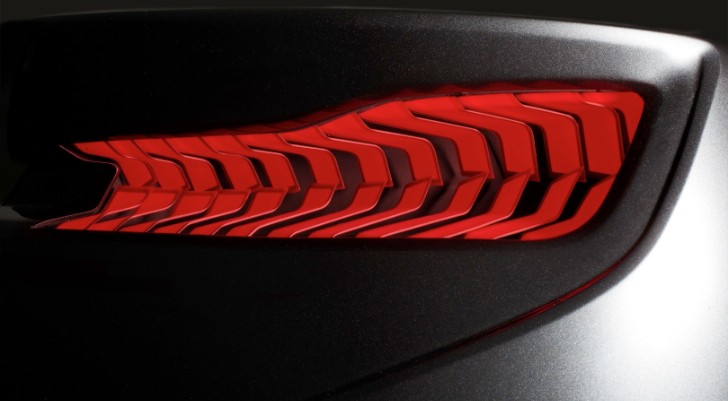This year BMW wrote history when it announced that it will be the first manufacturer in the world to put laser headlights into production under the trademark name ‘Laserlight’. The i8 will be the first car in the world to feature such technology and it will enter production this autumn.
However, the Germans won’t stop there. According to their latest press release, the company will soon introduce a new concept, called Organic Light.
As you probably might’ve guessed by now, the new technology uses Organic light-emitting diodes or OLEDs, something smartphone manufacturers are already accustomed to, as a lot of our phones currently use this tech to light up our screen.
Compared to traditional LEDs, the organic alternative has a lot of advantages. First of all, OLEDs are 150 times thinner than a human hair. Can you grasp what that means? Let us put it this way: a human hair is 0.06 millimeters thin on average. Now imagine just how thin OLEDs are... About 400 nanometers in height (a nanometer is equal to one millionth of a millimeter).
That means that these new light-emitting devices can be used in all sorts of applications both inside and outside of the car. At first, they will be used in combination with conventional LEDs in front and taillights to further emphasize the BMW characteristic design but then they might migrate to replace other lighting devices inside the cabin and even on the side mirrors as turn signals.
Since the size of the things is so small, the energy consumption is also limited, therefore, in turn further reducing CO2 emissions into the atmosphere, while their organic character means that they are made of mostly eco-friendly materials such as polymers that will simply be disposed of as any other piece of glass around, at the end of their lifetime (which is estimated to be as long as the car’s lifespan itself).
The sky is the limit when it comes to using OLEDs in automotive design. Because of their size and the way they emit light, the new diodes can be used in a variety o purposes. According to BMW, at first, OLEDs will be two-dimensional in appearance with a luminous area that can be shaped as desired and will look like a reflective surface when switched off. To better understand it, think of the screen of your smartphone, that becomes a sort-of mirror when it’s turned off. In the future even flexible, transparent organic LEDs will be introduced that will open up even bigger possibilities.
As you probably might’ve guessed by now, the new technology uses Organic light-emitting diodes or OLEDs, something smartphone manufacturers are already accustomed to, as a lot of our phones currently use this tech to light up our screen.
Compared to traditional LEDs, the organic alternative has a lot of advantages. First of all, OLEDs are 150 times thinner than a human hair. Can you grasp what that means? Let us put it this way: a human hair is 0.06 millimeters thin on average. Now imagine just how thin OLEDs are... About 400 nanometers in height (a nanometer is equal to one millionth of a millimeter).
That means that these new light-emitting devices can be used in all sorts of applications both inside and outside of the car. At first, they will be used in combination with conventional LEDs in front and taillights to further emphasize the BMW characteristic design but then they might migrate to replace other lighting devices inside the cabin and even on the side mirrors as turn signals.
Since the size of the things is so small, the energy consumption is also limited, therefore, in turn further reducing CO2 emissions into the atmosphere, while their organic character means that they are made of mostly eco-friendly materials such as polymers that will simply be disposed of as any other piece of glass around, at the end of their lifetime (which is estimated to be as long as the car’s lifespan itself).
The sky is the limit when it comes to using OLEDs in automotive design. Because of their size and the way they emit light, the new diodes can be used in a variety o purposes. According to BMW, at first, OLEDs will be two-dimensional in appearance with a luminous area that can be shaped as desired and will look like a reflective surface when switched off. To better understand it, think of the screen of your smartphone, that becomes a sort-of mirror when it’s turned off. In the future even flexible, transparent organic LEDs will be introduced that will open up even bigger possibilities.




